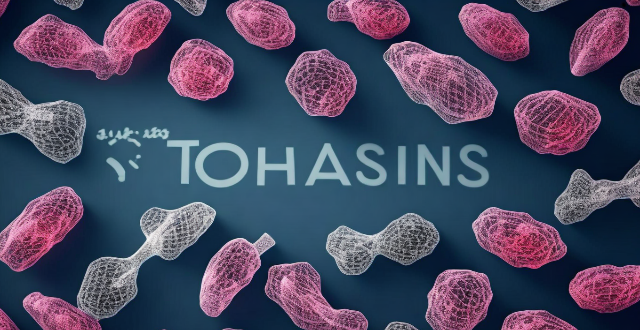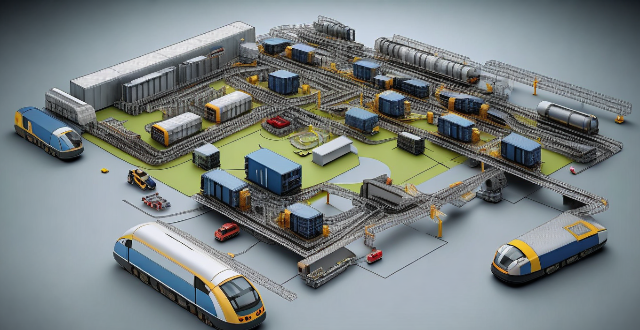Technology Transmission

How can Smart Grid Technology improve energy efficiency ?
Smart grid technology is transforming the energy sector by integrating advanced communication technologies, automated controls, and innovative sensors to create a more efficient, reliable, and sustainable energy system. Key features of smart grid technology include Advanced Metering Infrastructure (AMI), Distributed Energy Resources (DERs), Demand Response (DR) Programs, and Electric Vehicles (EVs). The benefits of smart grid technology on energy efficiency include improved load management through peak shaving, demand side management, and dynamic pricing; increased renewable energy integration through microgrids, grid balancing, and energy storage systems; optimized transmission and distribution through self-healing networks, predictive maintenance, and reduced transmission losses; and enhanced customer engagement and participation through consumer education, incentives for energy efficiency, and community solar programs. Overall, smart grid technology offers numerous opportunities to improve energy efficiency across various sectors of the energy industry while transitioning towards a more sustainable future with reliable and efficient energy delivery for all consumers.

What is the role of encryption in securing data transmission ?
Encryption is crucial for securing data transmission by converting plain text into unreadable ciphertext, ensuring confidentiality, integrity, and authentication. It protects sensitive information, prevents data tampering, enhances trust, complies with regulations, and reduces the risk of data breaches. Two main types of encryption are symmetric and asymmetric encryption, each using different keys for encryption and decryption.

How do communication protocols ensure data integrity and security during transmission ?
The text discusses the role of communication protocols in ensuring data integrity and security during transmission. It outlines mechanisms such as checksums, sequence numbers, acknowledgments for maintaining data integrity, and encryption, authentication, and secure protocols for ensuring data security. The article emphasizes that adhering to these rules allows devices to communicate reliably and securely over networks.

Is network slicing secure for sensitive data transmission ?
Network slicing is a technology that allows multiple virtual networks to coexist on a shared physical infrastructure, enabling service providers to offer customized services with different QoS requirements. While network slicing offers numerous benefits such as customization, resource allocation, scalability, and isolation, there are also potential security concerns that need to be addressed. These include data isolation, access control, encryption, and intrusion detection and prevention systems (IDPS). By implementing robust isolation mechanisms, access control policies, strong encryption algorithms, and effective IDPS, service providers can leverage network slicing while maintaining the security of sensitive data transmission.

How do communication satellites enable real-time data transmission and monitoring ?
Communication satellites play a crucial role in enabling real-time data transmission and monitoring by serving as relay stations in space that can receive signals from one location on Earth and transmit them to another location. This is achieved through a complex system of technology, infrastructure, and protocols. Satellites are positioned in orbits around the Earth, either in geostationary orbit (GEO) or lower Earth orbit (LEO). Geostationary satellites remain fixed over a specific point on the Earth's surface, while LEO satellites move relative to the Earth's surface. The process begins when a signal, such as a phone call, internet data, or video feed, is generated at a source location. The signal is then sent via a ground station, which has powerful transmitters and antennas, up to the communication satellite using radio waves. Once the satellite receives the signal, it amplifies and frequencies it to avoid interference with other signals. The amplified signal is then transmitted back down to Earth, where another ground station receives it. Finally, the received signal is distributed to its intended destination, such as a phone network, the internet, or a monitoring station. Real-time monitoring is facilitated by the speed at which data can travel via satellite. With modern technology, latency (the time delay in signal transmission) can be minimized, especially with LEO satellites due to their closer proximity to Earth. Satellites can also be networked to provide redundancy and increased bandwidth for large-scale monitoring systems. Key technologies and infrastructure include ground stations, satellite design, network protocols, and satellite constellations. However, there are challenges and considerations such as weather impact, geographical constraints, and regulatory issues. In summary, communication satellites enable real-time data transmission and monitoring by acting as high-altitude relay stations, utilizing advanced technologies and infrastructure to deliver signals across vast distances with minimal delay.

Can you explain the working of HTTP and HTTPS protocols ?
HTTP and HTTPS are two important protocols for data transmission on the internet. The main difference between them is that HTTPS encrypts the transmitted data to protect it from interception and tampering, while HTTP does not. HTTP operates by default on TCP port 80 and transmits data in plaintext, while HTTPS uses SSL/TLS for data encryption and operates by default on TCP port 443. The working steps of HTTP include address parsing, DNS resolution, HTTP request packaging, establishing a TCP connection, sending a request command, server response, and closing the connection. On the other hand, the working steps of HTTPS involve an initial handshake, verifying a digital certificate, session key exchange, encrypted data transmission, and connection closure. With increasing concerns about cybersecurity, HTTPS has gradually become the preferred choice for websites requiring secure data transmission.

How can advancements in technology aid in more accurate virus origin tracing ?
The article discusses the role of technology in tracing virus origins, highlighting various techniques such as genomic sequencing, phylogenetic analysis, data mining, machine learning, satellite imagery, and remote sensing. These methods provide powerful tools for understanding how viruses evolve and spread over time, as well as identifying areas at risk for future outbreaks. The advancements in technology have revolutionized our ability to trace the origins of viruses, offering valuable insights into the ecological factors that contribute to virus emergence.

How can Smart Grid Technology reduce carbon emissions ?
Smart grid technology can reduce carbon emissions by improving energy efficiency, integrating renewable sources, enhancing system reliability, engaging consumers, and optimizing transmission and distribution.

What are the latest trends in basketball shoe design and technology ?
The latest trends in basketball shoe design and technology include the use of lightweight materials, energy return systems, customization options, sustainability initiatives, and smart technology integration. These advancements aim to enhance performance, style, and environmental consciousness while providing players with personalized footwear choices.

How does network expansion improve internet speed ?
Network expansion enhances internet speeds by reducing congestion, shortening transmission distances, increasing bandwidth, improving redundancy, and allowing for scalability. This process involves adding more nodes to the network, such as routers and switches, which improve data transmission efficiency. By distributing traffic across multiple routes and upgrading infrastructure, internet service providers can meet increasing demand for high-speed connections while maintaining fast and reliable service.

What is the difference between TCP and UDP protocols ?
TCP and UDP are transport layer protocols in the TCP/IP suite with distinct characteristics. TCP is connection-oriented, reliable, has a larger header overhead, lower transmission efficiency, used for applications needing reliability like FTP and HTTP. UDP is connectionless, unreliable, has smaller header overhead, higher transmission efficiency, used for real-time applications tolerant to data loss like video streaming and online games.

What are the key components of a CHEV's drive system ?
The key components of a CHEV's drive system include the engine, electric motor, transmission, battery pack, and energy management system. The engine generates the majority of the power needed to propel the vehicle, while the electric motor provides additional power during acceleration or hill climbing. The transmission transfers power from the engine and electric motor to the wheels, and may be a conventional automatic or manual transmission or a specialized hybrid transmission. The battery pack stores electrical energy generated by the electric motor during regenerative braking and provides power to the electric motor when needed. The energy management system controls the flow of energy between the engine, electric motor, and battery pack, determining when to use each source of power based on driving conditions, state of charge of the battery, and driver demand. These components work together to provide a seamless driving experience while maximizing fuel efficiency and reducing emissions.

What are the most common types of network connectivity devices ?
This text discusses the various types of network connectivity devices, including routers, switches, modems, and wireless access points. Routers are used to forward data packets between computer networks, while switches are used to connect devices within a network. Modems convert digital data to analog signals for transmission over communication channels, and wireless access points allow wireless devices to connect to a wired network. The features of each device are also discussed, such as routing decisions, data transmission, security, and error detection and correction.

Can you explain the powertrain configuration of a CHEV ?
The powertrain configuration of a CHEV includes an ICE, EM, battery pack, transmission, and control unit. The ICE burns fuel to produce energy, while the EM provides additional power during acceleration or hill climbing. The battery pack stores electrical energy generated by the EM and regenerative braking systems. The transmission transfers power from the engine and electric motor to the wheels. Finally, the control unit monitors and manages all these components for smooth transitions between different driving modes.

What are the most promising applications of blockchain technology ?
Blockchain technology offers secure, decentralized, and transparent solutions in various industries. Promising applications include cryptocurrencies, smart contracts, remittances, trading, supply chain traceability, healthcare data management, real estate ownership, government services, and more. These applications can streamline processes, reduce costs, and improve trust and collaboration between parties. As the technology matures, more innovative uses are expected to emerge.

What is a communication satellite and how does it work ?
Communication satellites are vital for global telecommunication, relaying signals for phone calls, internet data, and TV broadcasts between Earth-based stations. They operate by receiving, amplifying, and retransmitting signals from one location to another through a series of steps involving transmission, reception, amplification with frequency conversion, and retransmission. Most occupy geostationary orbit to maintain a fixed position relative to Earth, simplifying ground station antenna targeting. These satellites cover extensive areas, support diverse applications like broadcasting and emergency response, and often form part of larger networks ensuring global connectivity. Their role is crucial in international business, disaster relief, and personal communications worldwide.

What are the latest advancements in satellite communication technology ?
Satellite communication technology has seen significant advancements in recent years, including high-throughput satellites (HTS) offering increased bandwidth and improved coverage, low Earth orbit (LEO) satellite constellations providing global coverage with low latency, 5G integrated satellite systems enhancing connectivity and capacity, and quantum satellite networks enabling secure long-distance transmission. These developments are revolutionizing global communication by offering faster speeds, broader access, and enhanced security.

How has technology revolutionized the healthcare industry ?
The healthcare industry has been transformed by advancements in technology, including electronic health records, telemedicine, wearable devices, medical imaging tools, and robotic surgery. These innovations have improved efficiency, expanded access to care, and enhanced patient outcomes. As technology continues to evolve, it will play an increasingly important role in shaping the future of healthcare.

What are the ethical considerations surrounding the use of carbon capture technology ?
Carbon capture technology is a method used to reduce carbon dioxide emissions, but it raises ethical concerns such as cost and accessibility, potential environmental impact, long-term effects, and accountability. It is important to ensure that the technology is implemented responsibly and equitably.

What role does technology play in climate adaptation ?
The article discusses the various ways in which technology can aid in climate adaptation. It mentions data collection and analysis, modeling and prediction, infrastructure development, agriculture and food security, water management, and health and well-being as key areas where technology is used. The article concludes that technology plays a crucial role in understanding and mitigating the challenges posed by climate change.

What role does technology play in modern education systems ?
The text discusses the role of technology in modern education systems, highlighting its ability to enhance accessibility, personalize learning experiences, improve collaboration and communication, refine assessment methods, and facilitate lifelong learning. It also acknowledges potential challenges such as the digital divide, overreliance on technology, and data privacy concerns. The conclusion emphasizes that while technology offers numerous opportunities for education enhancement, it should be integrated thoughtfully to avoid potential pitfalls.

How can blockchain technology be used in supply chain management ?
Blockchain technology is poised to revolutionize supply chain management by offering transparency, traceability, and security. Smart contracts automate transactions, while secure data sharing promotes collaboration. The technology also reduces manual processes, paperwork, and enhances compliance.

What innovations in sports technology can help prevent injuries ?
Innovations in sports technology have made it possible to prevent many sports injuries before they happen. Wearable technology, smart clothing, virtual reality training, strength and conditioning programs, and recovery techniques are all options available to help athletes stay safe and healthy while performing at their best. By embracing these technologies, coaches, trainers, and athletes can work together to create safer environments for sports competitions and training sessions.

How does technology facilitate lifelong learning ?
Technology has revolutionized education, making it more accessible, interactive, and personalized. It facilitates lifelong learning through online resources, digital libraries, simulation software, gamification, adaptive platforms, mobile learning, social media groups, online workshops, instant feedback, cost efficiency, and globalization of education. Technology offers a wealth of benefits for learners of all ages and backgrounds.

Can regular cleaning and disinfection prevent the transmission of other viruses besides COVID-19 ?
Regular cleaning and disinfection can prevent the transmission of other viruses besides COVID-19, such as those causing colds and flu. The CDC recommends routine cleaning of frequently touched surfaces to reduce the risk of infection. Effective cleaning involves using soap or detergent to remove dirt, followed by disinfecting with a product labeled for the specific virus. High-touch surfaces should be prioritized, and proper ventilation and glove use are advised. Following these practices helps create a safer environment.

How can technology be used to promote vaccine equity ?
Technology can promote vaccine equity by improving accessibility, monitoring, and distribution. Digital awareness campaigns, telemedicine services, real-time data tracking, data analytics, automated logistics systems, and cold chain management are some of the ways technology can be used to achieve this goal. By leveraging technology, we can bridge the gap between the haves and the have-nots, making vaccines accessible to all sections of society.

What types of applications will benefit most from Wi-Fi 6 technology ?
Wi-Fi 6, also known as 802.11ax, is the latest wireless networking standard designed to enhance speed, efficiency, and performance in high-density network environments. This technology offers several improvements over its predecessors, making it particularly beneficial for certain types of applications. Let's explore the applications that stand to gain the most from Wi-Fi 6 technology. Improved Speed and Throughput: - Lower Latency: Wi-Fi 6 reduces latency, providing a smoother gaming experience. - Higher Data Rates: Faster top speeds ensure quick downloads and seamless online multiplayer. - Increased Bandwidth: Wi-Fi 6 supports more data-intensive VR/AR experiences without lag. - Target Wake Time (TWT): Reduces power consumption, extending device battery life during prolonged use. - Improved Simultaneous Transmission: Wi-Fi 6 allows multiple devices to communicate with the router at once without slowing down. - Better Quality of Service (QoS): Prioritizes bandwidth-intensive video conferencing traffic over less critical data. Enhanced Network Efficiency: - Greater Device Capacity: Wi-Fi 6 can handle more connected devices without performance drops. - OFDMA Technology: Enables efficient data transmission to multiple devices simultaneously. - Spatial Reuse: Reduces network congestion by allowing devices to transmit data even when others are occupying the same channel. - Uplink and Downlink MU-MIMO: Supports simultaneous two-way communication with multiple devices, boosting office network efficiency. - Increased Connection Density: Wi-Fi 6 can manage a higher number of users in confined areas without compromising speed. - BSS Coloring: Minimizes interference between networks operating on the same frequency. Enhanced Security Features: - WPA3 Security Protocol: Integrates the latest security standards to protect sensitive corporate data. - Enhanced Access Controls: Offers more robust user and device authentication mechanisms. - Improved Encryption: Wi-Fi 6 includes stronger encryption methods for classified communications. - Secure Network Design: Supports the creation of secure, isolated networks for sensitive operations. Future-Proofing Infrastructure: - Scalability: Wi-Fi 6's design accommodates the rapid expansion of IoT devices. - Energy Efficiency: Optimized for low-power devices, extending the lifespan of IoT sensors and devices. - Increased Uplink Capacity: Better support for cloud backups and data synchronization tasks. - Optimized Channel Utilization: Wi-Fi 6 maximizes spectrum usage, enhancing overall cloud service performance.